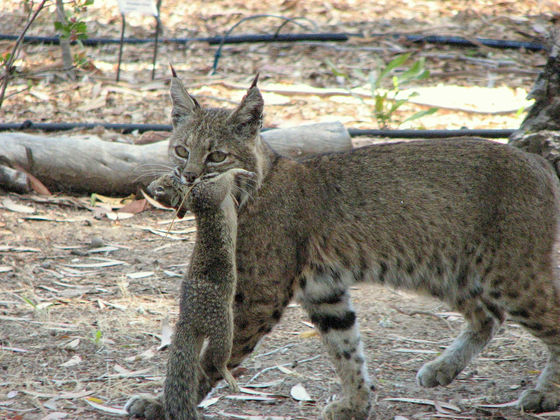The Nobel laureate aims to clarify the mechanism by which the stress increases as the smell of predators is applied

ByPiulet
In 2004 we discovered the olfactory sensation mechanism of Mus musculus and discovered odor receptor genesReceived the Nobel PrizeDr. Richard Axel and Dr. Linda Buck. Dr. Bak, who continues his research on olfaction even after that, revealed that the mouse has a mechanism to feel stress when sniffing the predator's odor.
A specific area of olfactory cortex involved in stress hormone responses to predator odours: Nature: Nature Publishing Group
http://www.nature.com/nature/journal/vaop/ncurrent/full/nature17156.html

We've found the neurons that make smelling a predator stressful | Ars Technica
http://arstechnica.com/science/2016/03/weve-found-the-neurons-that-make-smelling-a-predator-stressful/
Dr. Bu and others are studying the ecology related to the olfactory senses of Mus musculus, but furthermore it was found that the neural circuit passing through the hypothalamus from the nose of the mouse conveys the "smell of fear". Dr. Bach's research team conducted an attempt to trace the contacts of the olfactory neurons of Mus musculus using a special virus.Olfactory nerveSignals are gathered in a place called "olfactory cortex", but by injecting a special virus into the olfactory cortex, we can grasp where neurons are in contact when stress hormone is released, I heard that the contact of neurons continues to the hypothalamus.
Subsequently, the research team confirmed the reaction by letting the mouse sniff the urine of a fox or a cormorant. As a result, it turned out that only neurons in the area of "amygdalo-piriform (AmPir)" occupying a very narrow area of the olfactory cortex are activated. The same phenomenon did not occur in the urine of animals different from predators such as rabbits. In response to this result, the research team activated a predator's AmPir neurons with chemicals to ascertain whether AmPir neurons are tied to the fear response, and as a result of stressing the predator's urine as well as stress Hormone release was confirmed.

BySgrace
On the contrary, when inactivating AmPir neurons with chemicals, the release of stress hormone decreased even with predator urine. However, even though the AmPir neuron was inactivated, the mouse was in a state of being bound and it showed instinctive reaction although it was not a good strategy as a way to avoid danger. As a result, behavioral reactions due to "dangerous odor" are linked to other fields of the olfactory cortex, so Dr. Buck and others continue to identify this area.
Related Posts:







